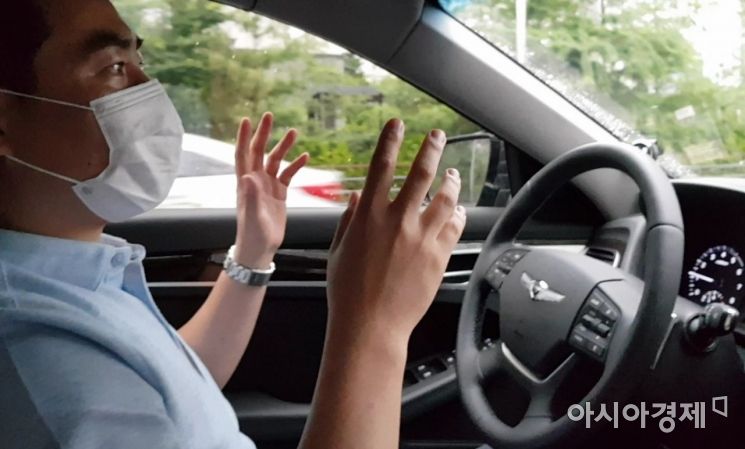Press Autonomous driving anywhere in the country just by tuning the map
페이지 정보
작성자 Autonomous a2z 조회 2,161 작성일 2020-08-11본문

The driver's seat was empty, but the steering wheel was busy turning left and right. When changing lanes, the blinker automatically activated, and when the traffic light turned yellow, the moving vehicle immediately slowed down and stopped at a red light. The traffic light changed to blue, but the pedestrians who had not yet crossed the road were sent first and then started driving again. When a large bus was running in the right lane right next to it, it kept a proper distance with a side gap. The autonomous driving system developed by Autonomous a2z goes beyond the concept of 'driving by itself' and implements 'textbook-style' driving that protects the safety of drivers, passengers and pedestrians.
Han Ji-hyeong, CEO of Autonomous a2z, showed off his self-driving vehicle driving test for 30 minutes on a road in Anyang, Gyeonggi-do. The company set up a research institute in Anyang, Gyeonggi-do last year to secure research manpower in Seoul and the metropolitan area. Autonomous a2z is a startup established in 2018 by four engineers from Kyungil University's Autonomous Vehicle Convergence Technology Research Center, including CEO Han. As the name of the company means, 'Developing all things autonomous driving cars (AtoZ)', the company developed its own autonomous driving system and algorithm to exceed the accumulated distance of 25,000 km for autonomous driving on the road.
CEO Han said, "If you just 'tuning' the map anywhere in the country, you can drive with an autonomous vehicle." "For commercialization of autonomous driving, we will travel on actual roads in major cities across the country, such as Seoul, Gyeonggi, Sejong, Daegu, Gwangju, and Ulsan, to develop technology. I'm working on it," he said.
The core of the company's autonomous driving system is LiDAR signal processing technology. Lidar fires a laser and uses scattered or reflected light to act as a kind of 'eye' that perceives the surrounding environment. Autonomous a2z puts lidar in each side mirror of the autonomous vehicle to observe the surrounding 50m without blind spots. Lidar classifies the recognized data into cars, people, and obstacles, and determines whether the autonomous vehicle should slow down or avoid obstacles. Recognition, judgment, and control take about 0.1 seconds.
Autonomous a2z's ultimate goal is to equip all human-driven vehicles with its solutions. The short-term goal is to develop and commercialize special vehicles such as vacuum cleaners, tractors and container trucks. This is because special vehicles that need to move at a low speed in a restricted area have a relatively easy certification process before they can be used.
In the mid to
long term, we are planning to commercialize commonly available autonomous
vehicles such as small buses and robot taxis. They are discussing a plan to
sell 4 small buses to Ulsan City within this year and supply them to Sejong
City for public transportation after 2021. Robot taxis are being tested in
Sangam, Seoul, Pangyo and Anyang, Ulsan, and Daegu. In accordance with the
Special Regulations and the Autonomous Driving Promotion Act, it plans to
promote related businesses in Daegu from this year.
Autonomous a2z was recently
selected by the Ministry of SMEs and Startups as a support company in the
autonomous driving sensing field among the Big 3 new future industries
(bio-health, system semiconductor, and future car). The 200 million won support
received through this program will be used to develop an 'unmanned vehicle test
kit' using autonomous driving technology.
It was possible to achieve results within two
years of founding thanks to the experience possessed by the founding members
and researchers of Autonomous a2z. CEO Han, Oh Young-cheol, Yoo Byung-yong, and
Huh Myeong-sun were key engineers at Hyundai Motor's autonomous driving
development center. He explained that he was able to start development from a
systemic point of view because he had experience in making finished cars.
CEO Han did not receive external investment from the beginning of the business. This is because it is judged that shareholder pressure for performance or unreasonable demands to proceed with business may act as an obstacle to business progress. The company's research manpower increased by 32 people within two years of its founding. Most of them are from automakers such as Hyundai and Kia.
아시아경제 문혜원기자 hmoon3@asiae.co.kr

